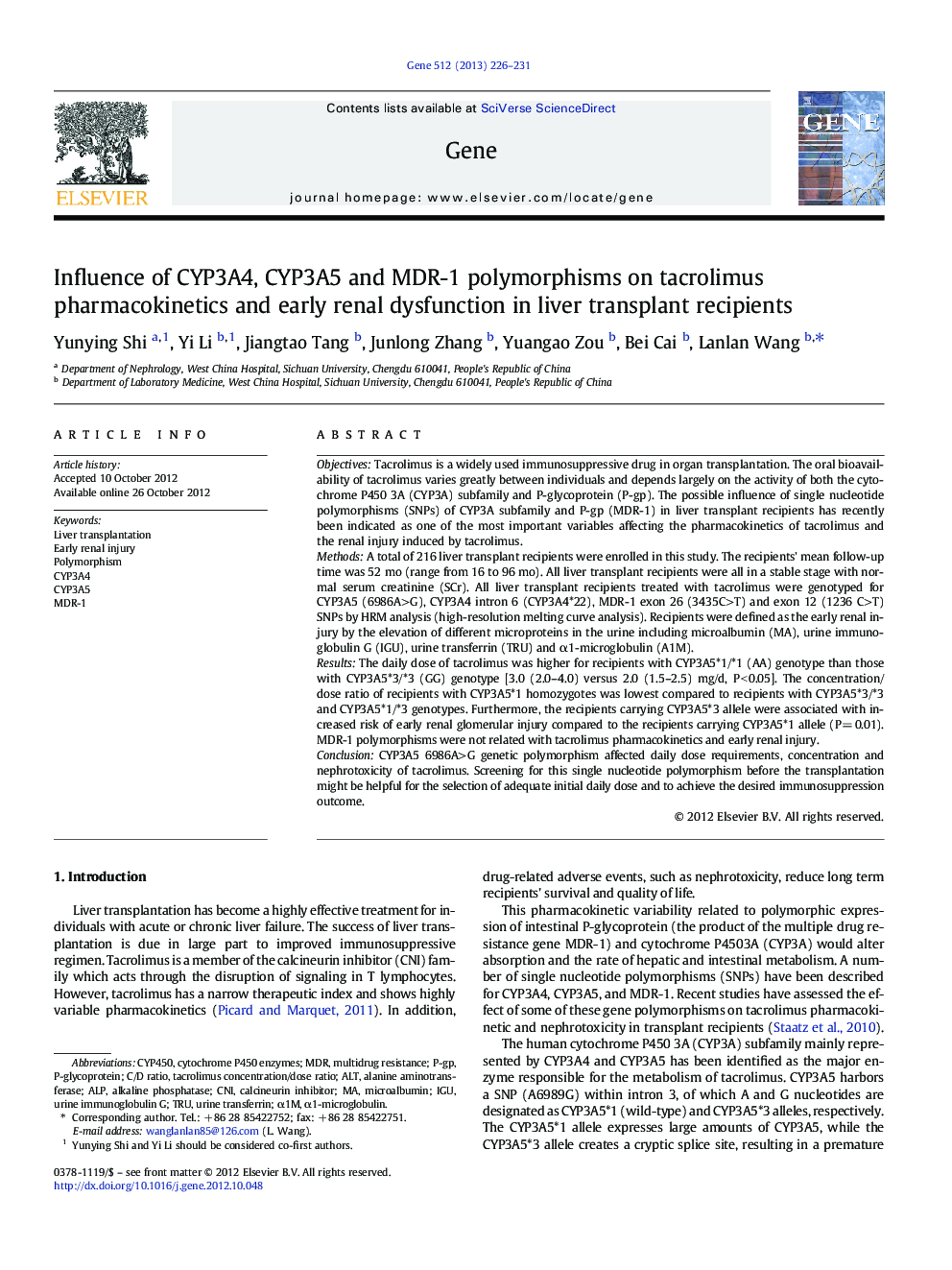| Article ID | Journal | Published Year | Pages | File Type |
|---|---|---|---|---|
| 2817437 | Gene | 2013 | 6 Pages |
ObjectivesTacrolimus is a widely used immunosuppressive drug in organ transplantation. The oral bioavailability of tacrolimus varies greatly between individuals and depends largely on the activity of both the cytochrome P450 3A (CYP3A) subfamily and P-glycoprotein (P-gp). The possible influence of single nucleotide polymorphisms (SNPs) of CYP3A subfamily and P-gp (MDR-1) in liver transplant recipients has recently been indicated as one of the most important variables affecting the pharmacokinetics of tacrolimus and the renal injury induced by tacrolimus.MethodsA total of 216 liver transplant recipients were enrolled in this study. The recipients' mean follow-up time was 52 mo (range from 16 to 96 mo). All liver transplant recipients were all in a stable stage with normal serum creatinine (SCr). All liver transplant recipients treated with tacrolimus were genotyped for CYP3A5 (6986A>G), CYP3A4 intron 6 (CYP3A4*22), MDR-1 exon 26 (3435C>T) and exon 12 (1236 C>T) SNPs by HRM analysis (high-resolution melting curve analysis). Recipients were defined as the early renal injury by the elevation of different microproteins in the urine including microalbumin (MA), urine immunoglobulin G (IGU), urine transferrin (TRU) and α1-microglobulin (A1M).ResultsThe daily dose of tacrolimus was higher for recipients with CYP3A5*1/*1 (AA) genotype than those with CYP3A5*3/*3 (GG) genotype [3.0 (2.0–4.0) versus 2.0 (1.5–2.5) mg/d, P < 0.05]. The concentration/dose ratio of recipients with CYP3A5*1 homozygotes was lowest compared to recipients with CYP3A5*3/*3 and CYP3A5*1/*3 genotypes. Furthermore, the recipients carrying CYP3A5*3 allele were associated with increased risk of early renal glomerular injury compared to the recipients carrying CYP3A5*1 allele (P = 0.01). MDR-1 polymorphisms were not related with tacrolimus pharmacokinetics and early renal injury.ConclusionCYP3A5 6986A>G genetic polymorphism affected daily dose requirements, concentration and nephrotoxicity of tacrolimus. Screening for this single nucleotide polymorphism before the transplantation might be helpful for the selection of adequate initial daily dose and to achieve the desired immunosuppression outcome.
► The concentration/dose ratio of recipient with CYP3A5*1 homozygotes were lower. ► The daily dose of tacrolimus were higher for recipients with CYP3A5*1 allele. ► CYP3A5*3 carriers associated with increased early renal glomerular injury.
